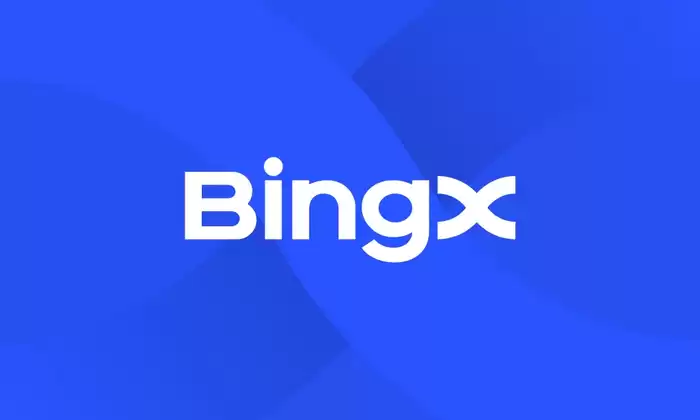-
 Bitcoin
Bitcoin $117800
0.42% -
 Ethereum
Ethereum $4436
0.39% -
 XRP
XRP $3.106
0.86% -
 Tether USDt
Tether USDt $1.001
0.04% -
 BNB
BNB $835.4
1.26% -
 Solana
Solana $188.8
2.21% -
 USDC
USDC $0.9999
0.00% -
 Dogecoin
Dogecoin $0.2302
2.98% -
 TRON
TRON $0.3484
-1.05% -
 Cardano
Cardano $0.9212
-1.20% -
 Hyperliquid
Hyperliquid $46.77
-0.77% -
 Chainlink
Chainlink $22.76
5.64% -
 Stellar
Stellar $0.4278
0.68% -
 Sui
Sui $3.771
2.39% -
 Bitcoin Cash
Bitcoin Cash $583.7
-0.91% -
 Ethena USDe
Ethena USDe $1.001
0.04% -
 Hedera
Hedera $0.2520
2.88% -
 Avalanche
Avalanche $24.28
2.56% -
 Litecoin
Litecoin $120.1
1.44% -
 Toncoin
Toncoin $3.452
1.46% -
 UNUS SED LEO
UNUS SED LEO $9.409
-0.95% -
 Shiba Inu
Shiba Inu $0.00001298
2.02% -
 Uniswap
Uniswap $11.01
3.56% -
 Polkadot
Polkadot $3.962
2.81% -
 Dai
Dai $1.000
0.00% -
 Bitget Token
Bitget Token $4.639
1.16% -
 Cronos
Cronos $0.1511
-0.06% -
 Ethena
Ethena $0.7254
2.87% -
 Monero
Monero $255.7
7.41% -
 Pepe
Pepe $0.00001101
2.80%
How to play contracts with BingX
Contract trading involves speculating on the future price of an asset without owning it, offering both profit potential and high risk.
Dec 01, 2024 at 11:47 am

How to Play Contracts with BingX
1. Understanding Contract Trading
Contract trading, also known as perpetual futures trading, involves speculating on the future price of an underlying asset without physically owning it. It offers traders the potential for significant gains, but it also carries a high level of risk. By entering into a contract, traders agree to buy (long position) or sell (short position) a specified amount of an asset at a predetermined price, known as the strike price.
Mechanism:
- Long Position: Buying a contract essentially signifies a bet that the underlying asset's price will rise. If the price increases beyond the strike price, the trader profits. However, if the price falls, the trader incurs a loss.
- Short Position: Selling a contract indicates a belief that the underlying asset's price will decline. If the price decreases below the strike price, the trader gains. Conversely, if the price increases, the trader faces losses.
2. Choosing the Right Contract
BingX offers various contract options, including popular cryptocurrencies like Bitcoin, Ethereum, and altcoins. Each contract has unique features, including:
- Underlying Asset: The asset that the contract tracks, such as BTC, ETH, or DOGE.
- Contract Type: Determines whether the trader expects the price to rise (long contract) or fall (short contract).
- Strike Price: The price at which the trader agrees to buy or sell the underlying asset.
- Leverage: The factor that amplifies the trader's potential gains or losses. It allows traders to control a larger position with a smaller initial investment.
- Expiration Date: Specifies when the contract expires and the settlement process begins.
3. Placing an Order
Once you have selected a suitable contract, you can place an order on the BingX platform by following these steps:
- Enter the Contract Details: Specify the underlying asset, contract type, strike price, and leverage.
- Set the Order Parameters: Determine the quantity of contracts you wish to trade and the order type (market order or limit order).
- Confirm the Order: Review the order details and ensure that you understand the potential risks involved before confirming it.
4. Managing Your Position
After placing an order, traders can actively manage their positions to mitigate risks and maximize profits.
- Stop-Loss and Take-Profit Orders: These orders allow traders to automatically close their positions when certain price thresholds are reached, helping to protect profits or minimize losses.
- Hedging: Traders can use multiple positions to reduce overall risk. For instance, they can open opposing positions in different contracts to balance out potential losses.
- Monitoring Market Conditions: Staying informed about market trends, news, and technical analysis can help traders make informed decisions and adjust their strategies accordingly.
5. Settlement
When a contract expires, it is settled. This involves either delivering the underlying asset (for long positions) or paying the difference between the strike price and the underlying asset's price (for short positions). The settlement process ensures that winners receive their profits while losers bear their losses.
Disclaimer:info@kdj.com
The information provided is not trading advice. kdj.com does not assume any responsibility for any investments made based on the information provided in this article. Cryptocurrencies are highly volatile and it is highly recommended that you invest with caution after thorough research!
If you believe that the content used on this website infringes your copyright, please contact us immediately (info@kdj.com) and we will delete it promptly.
- Kazakhstan's Crypto Leap: Bitcoin ETF and Central Asia's Digital Finance Future
- 2025-08-13 12:45:19
- BlockDAG Presale Blazes Past $371M: Fundraising Frenzy Fuels Crypto Sensation
- 2025-08-13 13:05:21
- Meme Coins: Chasing the 2025 Surge – Which Will Moonshot?
- 2025-08-13 10:25:23
- Bitcoin's Wild Ride: Rally, Pullback, and What's Next
- 2025-08-13 10:25:23
- Bitcoin, Bitmax, and Institutional Demand: A New Era of Crypto Investment
- 2025-08-13 10:45:12
- Solana, ROAM, and Airdrops: What's the Buzz in 2025?
- 2025-08-13 11:35:13
Related knowledge

Is it possible to adjust the leverage on an open position on KuCoin?
Aug 09,2025 at 08:21pm
Understanding Leverage in KuCoin Futures TradingLeverage in KuCoin Futures allows traders to amplify their exposure to price movements by borrowing fu...

What cryptocurrencies are supported as collateral on KuCoin Futures?
Aug 11,2025 at 04:21am
Overview of KuCoin Futures and Collateral MechanismKuCoin Futures is a derivatives trading platform that allows users to trade perpetual and delivery ...

What is the difference between realized and unrealized PNL on KuCoin?
Aug 09,2025 at 01:49am
Understanding Realized and Unrealized PNL on KuCoinWhen trading on KuCoin, especially in futures and perpetual contracts, understanding the distinctio...

What different order types are available to use on KuCoin Futures?
Aug 13,2025 at 11:35am
Understanding Order Types on KuCoin FuturesKuCoin Futures offers a comprehensive range of order types to accommodate different trading strategies and ...

How does KuCoin Futures compare against Binance Futures in terms of features?
Aug 09,2025 at 03:22am
Trading Interface and User ExperienceThe trading interface is a critical component when comparing KuCoin Futures and Binance Futures, as it directly i...

How can I manage risk when applying high leverage on KuCoin?
Aug 13,2025 at 11:35am
Understanding High Leverage and Its Implications on KuCoinHigh leverage in cryptocurrency trading allows users to control larger positions with a rela...

Is it possible to adjust the leverage on an open position on KuCoin?
Aug 09,2025 at 08:21pm
Understanding Leverage in KuCoin Futures TradingLeverage in KuCoin Futures allows traders to amplify their exposure to price movements by borrowing fu...

What cryptocurrencies are supported as collateral on KuCoin Futures?
Aug 11,2025 at 04:21am
Overview of KuCoin Futures and Collateral MechanismKuCoin Futures is a derivatives trading platform that allows users to trade perpetual and delivery ...

What is the difference between realized and unrealized PNL on KuCoin?
Aug 09,2025 at 01:49am
Understanding Realized and Unrealized PNL on KuCoinWhen trading on KuCoin, especially in futures and perpetual contracts, understanding the distinctio...

What different order types are available to use on KuCoin Futures?
Aug 13,2025 at 11:35am
Understanding Order Types on KuCoin FuturesKuCoin Futures offers a comprehensive range of order types to accommodate different trading strategies and ...

How does KuCoin Futures compare against Binance Futures in terms of features?
Aug 09,2025 at 03:22am
Trading Interface and User ExperienceThe trading interface is a critical component when comparing KuCoin Futures and Binance Futures, as it directly i...

How can I manage risk when applying high leverage on KuCoin?
Aug 13,2025 at 11:35am
Understanding High Leverage and Its Implications on KuCoinHigh leverage in cryptocurrency trading allows users to control larger positions with a rela...
See all articles

























































































